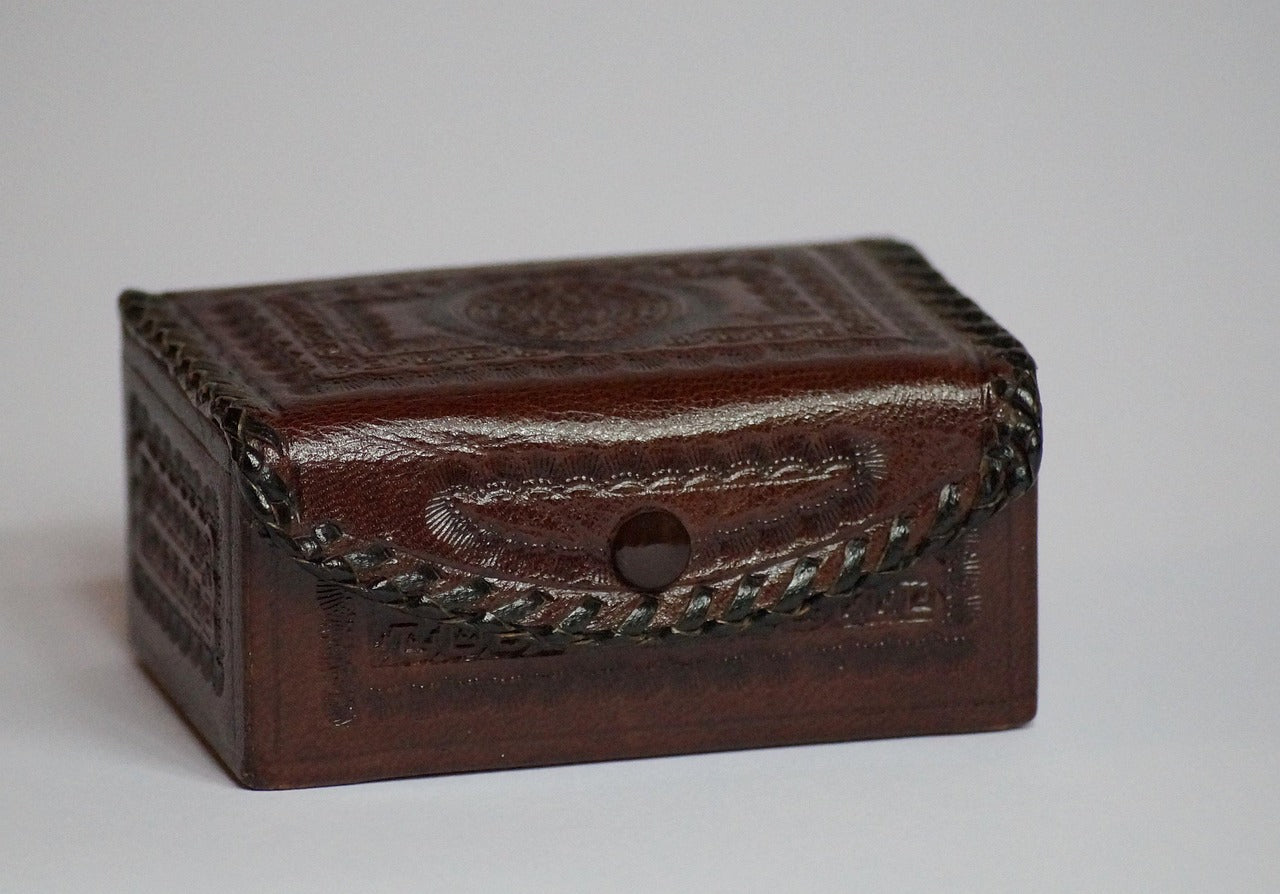A small jewelry box is more than just a storage piece—it can be a cherished keepsake, a meaningful gift, or a personalized home decor element. Customizing a jewelry box with paint and decorations allows for self-expression while transforming an ordinary item into something uniquely beautiful. Whether revamping an old jewelry box or creating a new design, this DIY project adds a creative touch to personal accessories. This guide covers every step to ensure a professional-looking, durable, and visually stunning custom jewelry box.
Materials Needed
Before beginning, gather all necessary materials to streamline the process. High-quality materials ensure a polished result.
Essential Supplies:
-
Jewelry box (wood, metal, plastic, or ceramic)
-
Fine-grit sandpaper (220–400 grit for smooth preparation)
-
Tack cloth (for removing dust after sanding)
-
Painter’s tape (for protecting areas not being painted)
-
Primer (wood or multi-surface)
-
Acrylic paint or spray paint (for vibrant, long-lasting color)
-
Brushes or foam applicators (varied sizes for precision and coverage)
-
Sealant or topcoat (matte, satin, or glossy finish for protection)
-
Decorative elements (stencils, decals, fabric, rhinestones, or gold leaf)
-
Strong adhesive or Mod Podge (for affixing embellishments)
-
Cleaning cloth and mild soap (for surface preparation)
Preparing Your Jewelry Box
Proper preparation ensures smooth, even paint application and long-lasting results. Follow these steps before painting:
-
Clean the Surface: Use a damp cloth and mild soap to remove dirt, dust, and oils. Let it dry completely before proceeding.
-
Remove Hardware: If the box has hinges, knobs, or decorative pieces, remove them for easier painting.
-
Protect Unpainted Areas: Use painter’s tape to cover areas that should remain paint-free, such as glass inserts or inside compartments.
Sanding the Jewelry Box
Sanding is essential for creating an even surface for paint adhesion.
Steps for Effective Sanding:
-
Choose the Right Grit: Start with 220-grit sandpaper for light smoothing or 120-grit for rough surfaces.
-
Sand with the Grain: Move in the direction of the wood grain to prevent scratches.
-
Remove Dust: Wipe down the jewelry box with a tack cloth to clear away residue before priming.
Priming Your Jewelry Box
Primer ensures a uniform base for paint application, preventing uneven absorption and enhancing durability.
How to Apply Primer:
-
Select the Right Primer: Choose a wood primer for wooden boxes or a multi-surface primer for other materials.
-
Apply Thin Layers: Use a foam brush or spray primer in light coats to avoid drips.
-
Allow Proper Drying: Let the primer dry completely (typically 1–2 hours) before painting.
Painting Techniques
Choosing the right paint and application method ensures a smooth, vibrant finish.
Types of Paint:
-
Acrylic Paint: Best for detailed designs and brushwork.
-
Spray Paint: Ideal for even coverage and quick drying.
-
Chalk Paint: Provides a soft, matte finish for vintage aesthetics.
Painting Steps:
-
Apply the First Coat: Use a brush or spray in light, even strokes.
-
Allow Drying Time: Let the first coat dry before adding additional layers.
-
Add Multiple Coats: Apply 2–3 coats for solid color depth and consistency.
Decorative Techniques
Elevate the jewelry box design with creative enhancements.
Popular Decoration Ideas:
-
Stenciling: Use stencils to create intricate patterns with contrasting colors.
-
Decoupage: Apply decorative paper or fabric with Mod Podge for a unique texture.
-
Gold Leaf Accents: Add metallic detailing for an elegant touch.
-
Hand-Painted Designs: Use fine brushes for intricate artwork, florals, or monograms.
-
Rhinestones and Embellishments: Glue on beads, pearls, or charms for added luxury.
Finishing Touches
Sealing the paint protects the jewelry box from chipping, moisture, and daily wear.
Best Finish Options:
-
Matte Finish: For a soft, understated look.
-
Satin Finish: Slightly glossy with a balanced sheen.
-
Glossy Finish: High shine and smooth texture.
How to Apply a Sealant:
-
Choose the Right Topcoat: Select an acrylic sealer, polyurethane, or wax-based finish.
-
Apply in Thin Layers: Use a foam brush or spray evenly across the surface.
-
Allow Curing Time: Let the sealant dry completely before reattaching hardware.
Customization Ideas
Personalized jewelry boxes make meaningful gifts or statement pieces.
Theme-Based Inspirations:
-
Romantic: Soft pastel colors, lace accents, floral patterns.
-
Vintage: Distressed wood, sepia-tone designs, antique brass handles.
-
Modern: Bold geometric patterns, monochrome shades, metallic trims.
-
Bohemian: Hand-painted mandalas, bright colors, mixed textures.
-
Minimalist: Sleek monochrome with subtle typography or line art.
Troubleshooting Common Issues
When painting a jewelry box, you might encounter some challenges that affect the final look. Below are common issues and ways to fix them for a smooth, professional finish:
-
Paint Peeling: If the paint is peeling off, ensure that the surface was properly prepared before painting. The box should be thoroughly sanded to create a smooth base, and a suitable primer should be applied before adding the paint. A high-quality primer helps the paint adhere better, preventing peeling over time.
-
Uneven Coats: To achieve a consistent finish, always apply thin, even layers of paint rather than thick ones. Thick coats may cause clumping, streaks, or an uneven texture. Allow each layer to dry fully before applying the next to ensure a flawless appearance. Using light sanding between coats can also improve uniformity.
-
Visible Brush Strokes: If noticeable brush strokes are affecting the smoothness of the paint job, consider using foam brushes or a high-quality synthetic brush for a smoother application. Additionally, sanding lightly between coats can help eliminate unwanted texture and create a more polished look.
-
Dripping Paint: Paint drips occur when too much paint is applied at once. To avoid this, do not overload the brush with paint. Instead, use controlled, light strokes to distribute the paint evenly. If drips do form, gently sand them down once dry and apply another thin coat for correction.
Maintenance and Care
Proper care is essential to preserve the beauty and durability of a painted jewelry box. Follow these maintenance tips to ensure longevity:
-
Keep Away from Excess Moisture: Wood and paint can be sensitive to humidity and water exposure. To prevent warping or paint damage, always store the jewelry box in a cool, dry place, away from direct sunlight or damp areas.
-
Clean Gently: To maintain the paint’s integrity, use a soft, dry cloth or a slightly damp microfiber cloth to clean the surface. Avoid using harsh cleaning chemicals or abrasive materials, as they may cause the paint to fade, peel, or lose its shine over time.
-
Touch Up When Needed: Over time, minor scratches or chips may appear on the surface. To keep the jewelry box looking fresh and well-maintained, apply a light touch-up coat of paint or a protective sealer as needed. Spot treatments can help maintain its original appearance and protect against further damage.
By addressing these common painting issues and following proper maintenance techniques, your jewelry box can remain visually appealing and in excellent condition for years to come.
(Source: @lalas_paintbrush)
Customizing a small jewelry box allows for personal expression, making it a treasured addition to any collection. From choosing the perfect paint to adding embellishments, every step enhances creativity and craftsmanship. For high-quality paints and finishes, explore Angelus Direct’s range of acrylic paints and sealers, ensuring long-lasting and professional results.
FAQs
1. What is the best type of paint for a jewelry box?
Acrylic paint works best for wooden jewelry boxes, while spray paint provides even coverage for various materials.
2. How long should I wait between paint coats?
Each coat should dry for at least 1–2 hours to prevent smudging and ensure proper adhesion.
3. Can I use fabric to decorate my jewelry box?
Yes! Fabric can be adhered using Mod Podge, creating a textured and elegant design.
4. What’s the best way to achieve a vintage look?
Use chalk paint, distress the edges with sandpaper, and apply a matte or antique glaze finish.
5. Do I need to seal the jewelry box after painting?
Yes, sealing prevents chipping, protects the paint, and ensures a longer lifespan for the design.
6. Where can I find high-quality paint for my project?
For premium-quality paint, finishes, and sealers, check out Angelus Direct, offering a variety of customization products designed for durable and stunning results.

